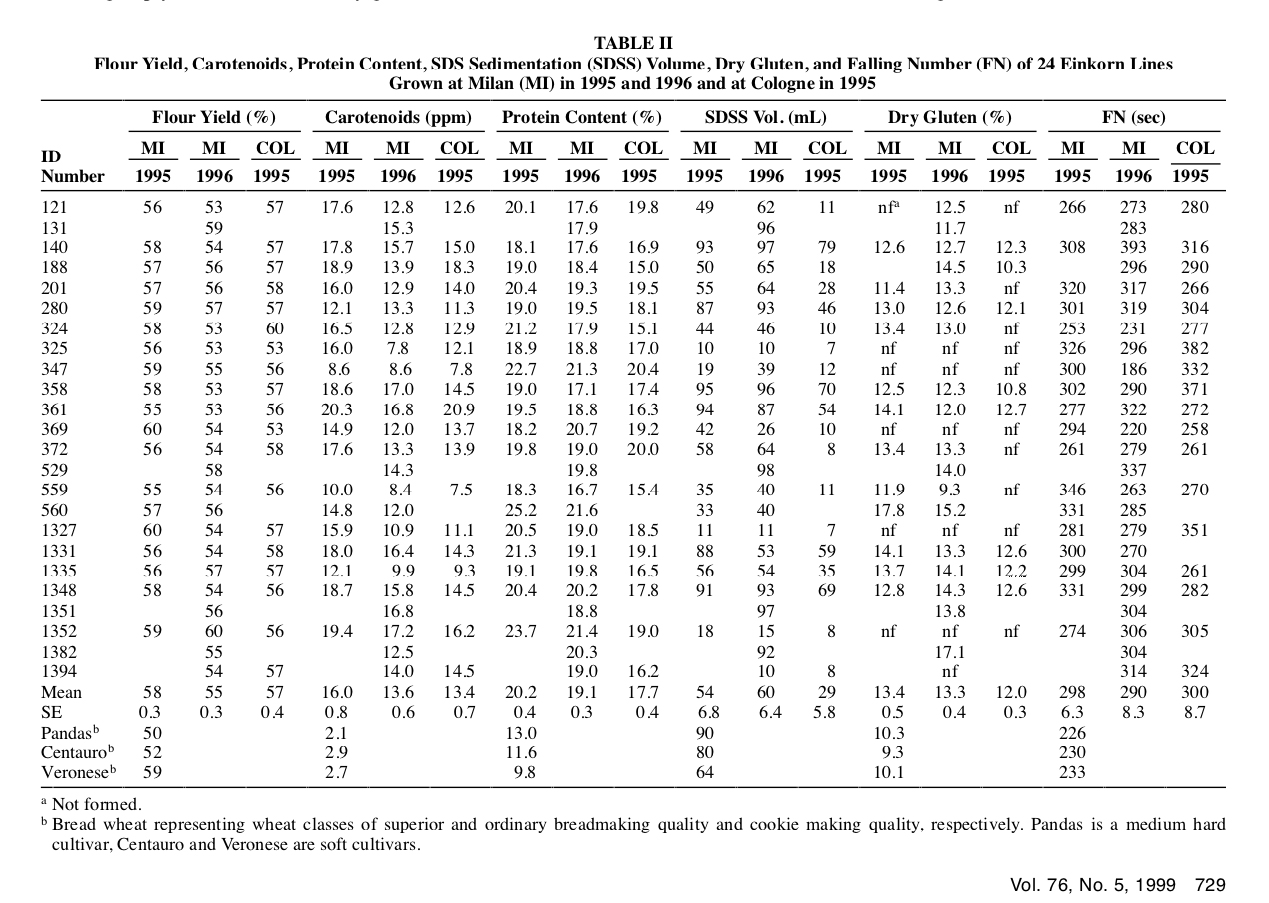La ricerca ha evidenziato, attraverso test per la realizzazione di pane e biscotti, le migliori varietà di monococco tra le 24 prese in esame: tra queste le varietà ID140, ID280 e Id361 sono risultate le migliori per entrambi gli usi.
La ricerca riporta anche come, per le proprietà reologiche delle farine sia importante la presenza o assenza di un numero molto limitato di subunità della proteina di riserva evidenziando l’importanza delle LMW-GS (glutenine a basso peso molecolare) nella qualità della panificazione “.
Einkorn Characterization for Bread and Cookie Production in Relation to Protein Subunit Composition M. Corbellini, S. Empilli, P. Vaccino, A. Brandolini, B. Borghi, M. Heun, and F. Salamini. Cereal Chem. 76(5):727–733
Abstract
“Twenty-four einkorns were evaluated for agronomic traits in Italy and in Germany in replicated plot trials. After dehulling and milling, the harvested kernels, flour protein content, sedimentation volume, falling number, carotenoid, and dry gluten content were determined. Farinograph profiles were obtained with a farinograph and baking and cookie quality were evaluated with standard microtests. Significant differences in yield potential were observed between the two locations, with a three-fold increase in Germany as compared with Italy. One of the einkorn lines (ID529) had farinograph stability and degree of softening indices better than those of the control bread wheat. All the samples analyzed for breadmaking aptitude showed some degree of stickiness, but it was possible to handle the dough during the different steps of breadmaking. On average, cookies produced with einkorn flour were larger in diameter and thinner than those produced with soft wheat flour. The composition in α, β and γ-gliadins and in high molecular weight glutenin subunits was similar in all the lines. In contrast, the pattern exhibited in low molecular weight glutenin subunits correlated strictly with baking quality. In particular, the lines with bands arbitrarily designated a and b showed a high breadmaking poten- tial, while the lines lacking these bands had an ample range of variability but, on average, a much lower baking potential. Our data point to a simple genetic control of the breadmaking aptitude and indicate einkorn not only as a promising source of specialty foods but also as an ideal species for genetic investigations on wheat quality”.
NOTE:
LMW-GS: Glutenine a basso peso molecolare
Tabella estratta dalla ricerca:

Caratterizzazione elettroforetica delle proteine di riserva: glutenine e gliadine. Esse rappresentano, con le diverse rispettive bande, l’impronta genetica che ne definisce ed individua la varietà. (Tabella estratta dalla ricerca)

